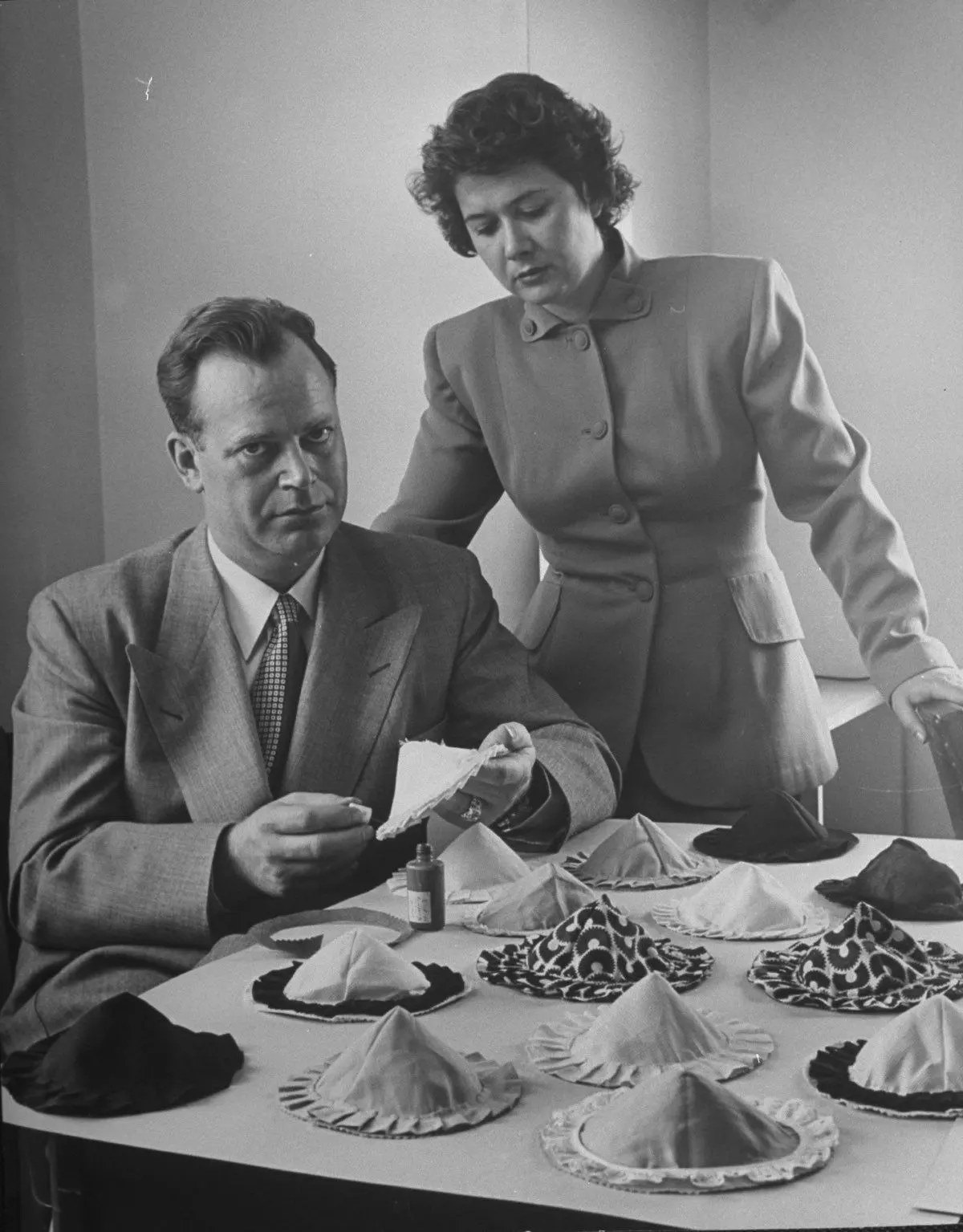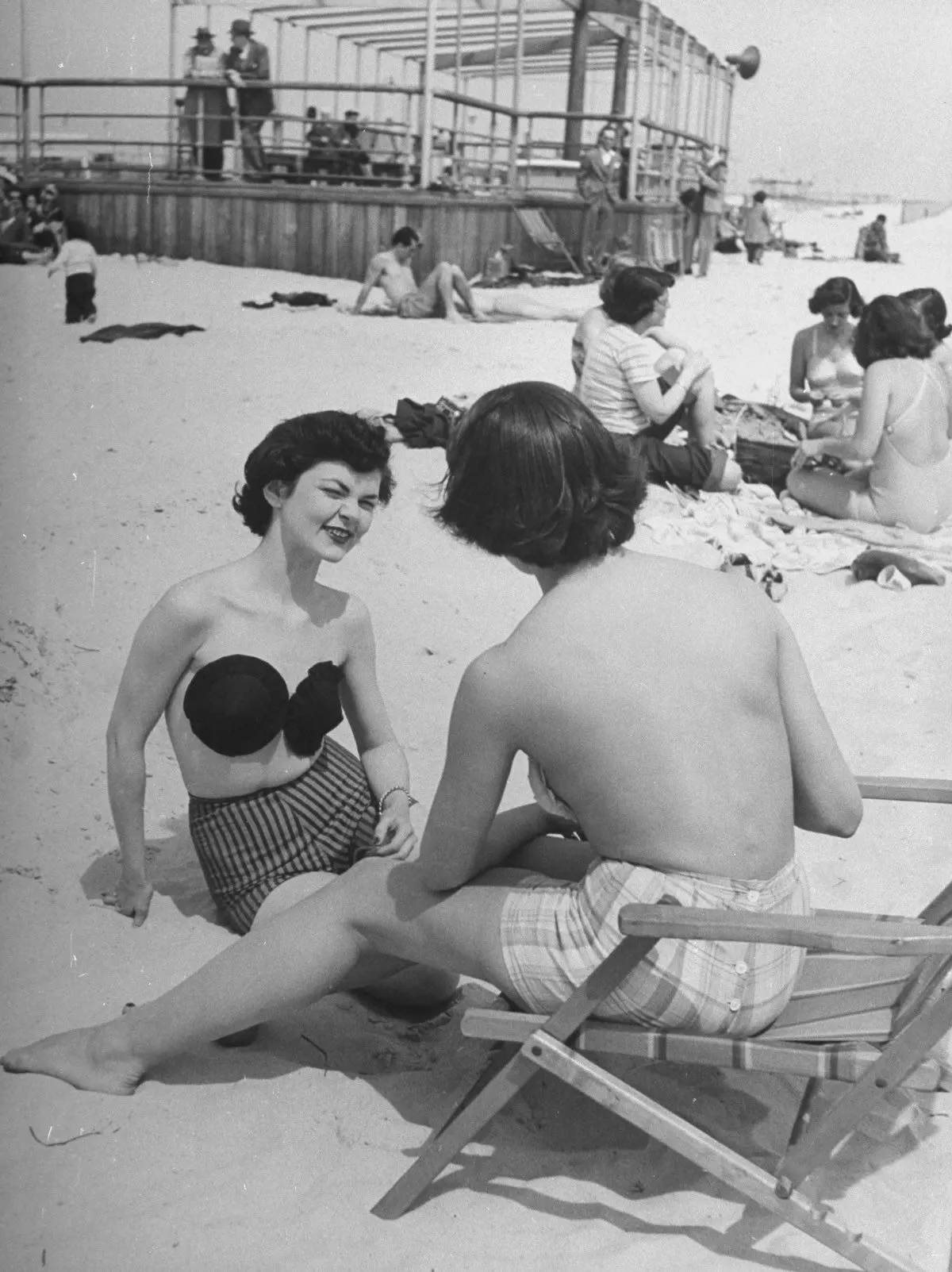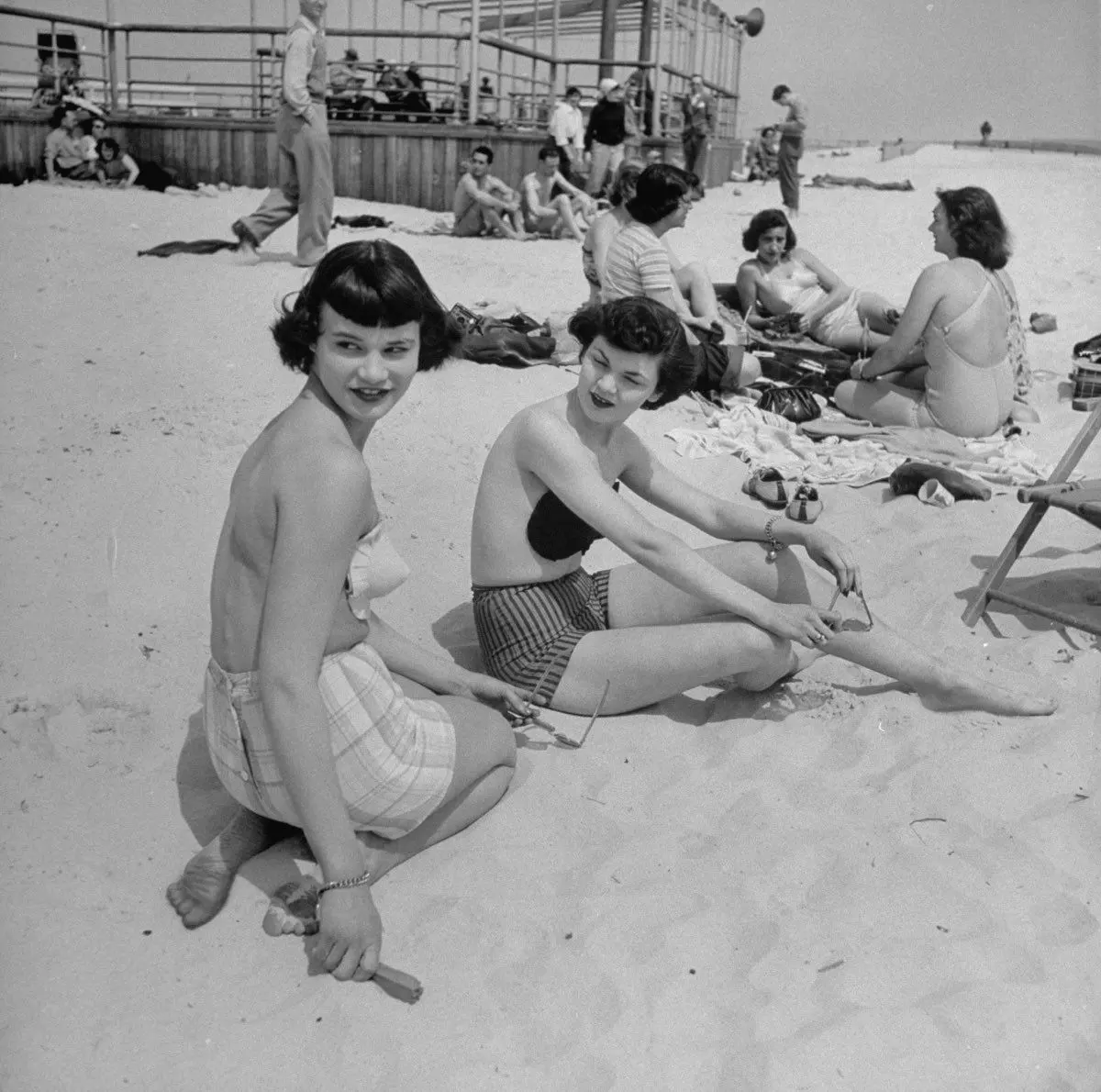In May 1949, Charles L. Langs announced a daring innovation in beachwear: a pair of bra cups a woman could affix to her breasts with an adhesive. His idea was to use individual strapless cups for each breast, backed with specially developed glue. Langs was a successful entrepreneur having made a fortune by chromium plating the grilles for Cadillac and Ford cars. He teamed up with industrial chemist Charles W. Waltonand together they produced an adhesive that remained in place when required and did not leave a sticky residue when removed. The adhesive brassiere, marketed as Posēs (pronounced “pose-ease”) was a bold proposition: a pair of discrete cups with frilled circumferences and sharp, protruding points), which could be worn as outerwear and facilitate an even tan. These individual bras aimed to be strong enough to hold fast during vigorous exercise and yet be easy and painless to remove. The inventors claimed that the cups would stay on even if their wearer jumped into the swimming pool from a 10-foot diving board. Any woman who has jumped into a pool wearing a strapless bathing suit top will surely dismiss this claim as misleading. The Life magazine article on 16 May 1949 noted that “For 5,000 years clothes have been draped, tied, buttoned, pinned and buckled on the human form. This year, for the first time in history, they will be glued on”. The magazine claimed that the Posĕs design gave any woman “a startling look, especially when she is seen from the rear.” When running the enterprise became too challenging, Langs sold it out to another company called Textron Inc. However, customers complained about poor workmanship and failure to deliver the items. That and the fact that strapless bras are not for every occasion and women, especially those allergic to the adhesive, meant that the trend died out quickly. Another reason why the style never took off was that the adhesive, known as the “rejuvenator”, had to be reapplied with each wear from an accompanying bottle. Eventually, Posĕs didn’t leave as much of an impact, as it soon faded into oblivion while brassieres continued to evolve.
(Photo credit: Nina Leen / The LIFE Picture Collection / Getty Images / Mashable.com). Notify me of new posts by email.
Δ Subscribe











